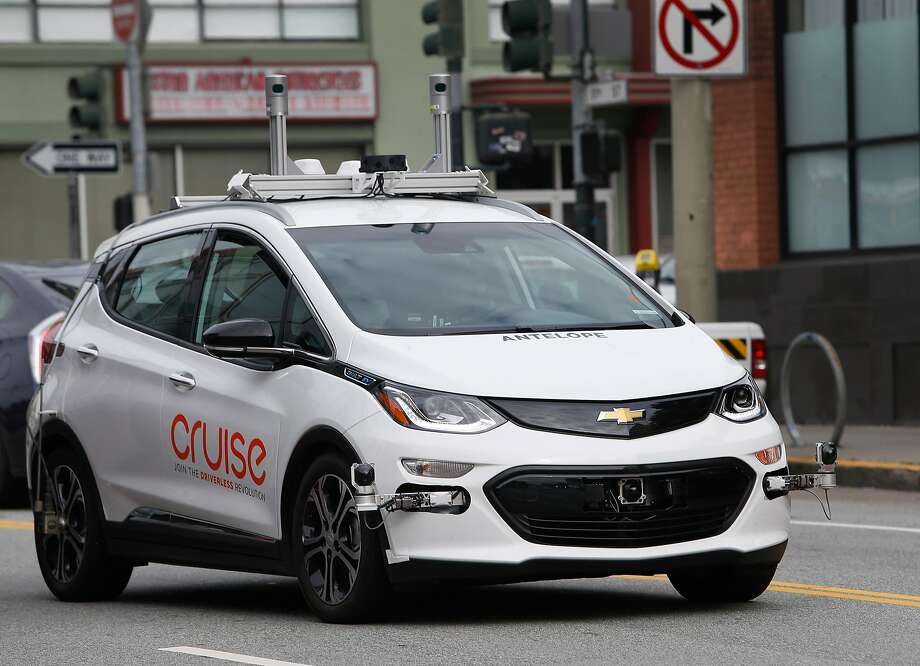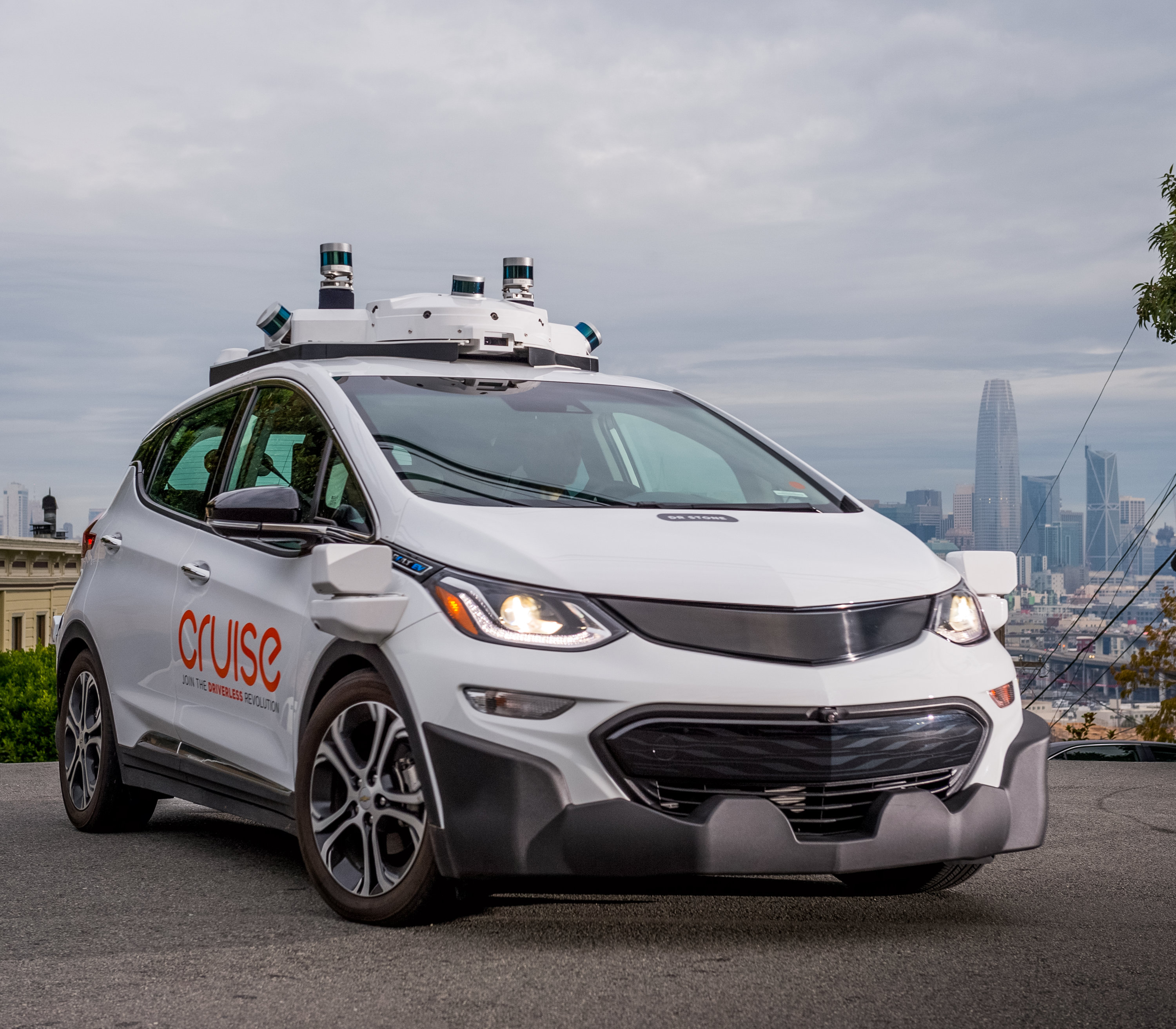GM's Cruise robotaxis are back in Phoenix but people are driving them
Table Of Content

Meanwhile, Cruise handled the sensing and computing technologies, as well as the experience from the rider’s standpoint. The not-a-car sits on the gleaming black stage surrounded by a halo of light. It’s orange and black and white, and roughly the same size as a crossover SUV, but somehow looks much larger from the outside. There is no obvious front to the vehicle, no hood, no driver or passenger side windows, no side-view mirrors.
Creating the AV Ecosystem
Cruise offers to pay $112K in fines over allegations it misled regulators about driverless car - NBC Bay Area
Cruise offers to pay $112K in fines over allegations it misled regulators about driverless car.
Posted: Wed, 07 Feb 2024 08:00:00 GMT [source]
Agency documents cited two injuries, including the 2 October crash. The complaints involved vehicles operating autonomously and “encroaching on pedestrians present in or entering roadways, including pedestrian crosswalks in the proximity of the intended travel path of the vehicles”, the agency said. General Motors’ Cruise autonomous vehicle unit is recalling all 950 of its cars to update software after one of them dragged a pedestrian to the side of a San Francisco street in early October and a subsequent ban by California regulators.
Exclusive look at Cruise’s first driverless car without a steering wheel or pedals
Our goal is to earn trust and build partnerships with the communities such that, ultimately, we resume fully driverless operations in collaboration with a city. Safety is the defining principle for everything we do and will guide our progress through this process. On Oct. 2, a car hit a woman in a San Francisco intersection and flung her into the path of one of Cruise’s driverless taxis. The Cruise car ran over her, briefly stopped and then dragged her some 20 feet before pulling to the curb, causing severe injuries. Ford has said it will build an autonomous car without a steering wheel or pedals by 2021, while Waymo has begun offering a limited number of rides in fully driverless minivans to its customers in Phoenix, Arizona.
Cruise recalls all self-driving cars after grisly accident and California ban
The company said in January that investigations or inquiries into the incident included those by the California DMV, the California Public Utilities Commission, the National Highway Traffic Safety Administration, the U.S. Cruise said in January that it "accepts" the conclusions found in the report. The San Francisco-based company, of which GM owns about 80%, said it will "act on all" recommendations and is "fully cooperating" with investigations by state and federal agencies following the Oct. 2 accident. A third-party probe into the October incident and subsequent fallout, which was ordered by GM and Cruise, found culture issues, ineptitude and poor leadership were at the center of regulatory oversights that led to the accident. The probe also investigated allegations of a coverup by Cruise leadership, but did not find any evidence to support those claims. “It’s designed to be comfortable if it’s shared, but if it’s just you, you’ve got so much space in here you can really like stretch out,” he says, extending his legs so his feet almost touch mine.
GM Halving Spending On Cruise Self-Driving Cars In 2024, Report Says—Will 'Relaunch And Refocus' Unit - Forbes
GM Halving Spending On Cruise Self-Driving Cars In 2024, Report Says—Will 'Relaunch And Refocus' Unit.
Posted: Tue, 30 Jan 2024 08:00:00 GMT [source]
The 2 October crash prompted Cruise to suspend driverless operations nationwide after California regulators found that its cars posed a danger to public safety. The state’s department of motor vehicles revoked the license for Cruise, which was transporting passengers without human drivers throughout San Francisco. Koopman says the safety narrative can unravel when people see the driverless cars on city streets making the same mistakes as human drivers. He says he'd like to see the companies focus on making sure the technology is actually safe. Both Cruise and Waymo say their driverless cars are safer than human drivers – they don't get drunk, text or fall asleep at the wheel.
Suspension of operations
Today, we are making staff reductions that will affect 24% of full-time Cruisers, through no fault of their own. We are simplifying and focusing our efforts to return with an exceptional service in one city to start with and focusing on the Bolt platform for this first step before we scale. As a result, we are reducing our employee counts in operations and other areas. These impacts are largely outside of engineering, although some Tech positions are impacted also. After the fire truck collision, the California Department of Motor Vehicles told Cruise to reduce its fleet in half, to 150 cars, while it investigated the incident. A big part of Cruise’s strategy moving forward, as outlined in Tuesday’s blog post, involves reforming and establishing updated incident response and crisis management protocols to ensure more efficient and transparent responses in the future.
An Xbox VR headset is on the way, but it’s a ‘limited edition’ Meta Quest
But in certain circumstances such as a pedestrian positioned on the ground in the vehicle’s path, pulling over is not the desired response. In the crash, another vehicle with a person behind the wheel struck a pedestrian, sending the person into the path of a Cruise autonomous vehicle. But it then pulled to the right to get out of traffic, pulling the person about 20ft (six meters) forward. The pedestrian was pinned under one of the Cruise vehicle’s tires and was critically injured. Both Cruise and Waymo have released studies saying their vehicles are involved in fewer crashes than human drivers.

We have temporarily paused driverless service in all markets while we evaluate how to best serve our riders and the communities where we operate. Since becoming part of General Motors in March 2016,[17] Cruise has been working on developing software and hardware to make fully autonomous vehicles using modified Chevrolet Bolts. Regularly meet up for group rides in the San Francisco Bay Area and beyond. They have also paired their passion with their professional skills to help make roads safer for all. Meanwhile, Cruise is starting up again, but this time with humans in the driver's seat.
Engineering, a category that makes up the bulk of the Cruise workforce, is largely being preserved, according to the content of the email and discussions with internal sources. The company responded by pulling all its driverless vehicles off the roads, citing a need to regain public trust. Cruise said its car "braked aggressively to minimize the impact." It provided some news outlets with video of the incident, which ended right after the driverless car hit the woman. "We're on a trajectory that most businesses dream of, which is exponential growth," Vogt said during a July call with investors. He boasted about the size of Cruise's driverless car fleet, adding that "you will see several times this scale within the next six months."
And to be honest, I'm not even sure I would always order a Waymo if I had a chance. Right now, beyond the novelty, the big upside for me is that the fleet's cars — electric Jaguars — are comfortable and clean. And that the per-trip cost is about the same as an Uber Comfort (one level up from the base Uber X fare) — but really a bit cheaper, since you're not tipping your robot driver. While Waymo says it drives tens of thousands of trips a week, even the most tech-savvy people I talk to have yet to ride in one. Waymo, which is owned by Google's parent company, Alphabet, has a couple hundred self-driving cars roaming around San Francisco, and access is still limited there via a waiting list, as well as by geography. You can't get a Waymo to pick you up at San Francisco International Airport, for instance, or take you across the Bay Bridge to Oakland.
Waymo has avoided much of the public ire that built up over the summer. Its spokesperson told NPR that "safety is our mission and top priority" and that "we treat every event seriously by investigating it to understand what happened." Cruise says it gave regulators the entire video immediately after the incident. But the DMV says it was only after requesting the footage that Cruise handed it over – 10 days later. "Our folks cannot be paying attention to an autonomous vehicle when we've got ladders to throw," San Francisco Fire Chief Jeanine Nicholson said in an August hearing. "When you start having passive aggressive protests like people putting orange cones on your cars, this isn't going to come out your way," says Cummings.
Looking to the next chapter, our goal is to resume driverless operations. As we continue working to rebuild trust and determine the city where we will scale driverless, we also remain focused on continuing to improve our performance and overall safety approach. To that end, Cruise is resuming manual driving to create maps and gather road information in select cities, starting in Phoenix. This work is done using human-driven vehicles without autonomous systems engaged, and is a critical step for validating our self-driving systems as we work towards returning to our driverless mission. This will help inform where we ultimately will resume driverless operations. The first step is identifying high fidelity location data for road features and map information like speed limits, stop signs, traffic lights, lane paint, right turn only lanes and more.
Which is what David Margines, Waymo's director of product management, says is the service's chief appeal for customers right now. But, as robotaxis became increasingly ubiquitous throughout San Francisco, residents complained about near collisions and blunders. Local reports showed footage of confused vehicles clogging a residential cul-de-sac, driving into wet cement at a construction site and regularly running red lights.
The relaunch comes after the company ceased operations weeks after an Oct. 2 accident in which a pedestrian in San Francisco was dragged 20 feet by a Cruise robotaxi after being struck by a separate vehicle. We believe AVs will save lives and significantly reduce the number and severity of accidents on America’s and Arizona’s roads every year. AVs will also improve lives - including creating convenient and safe transportation options for the elderly and those with disabilities.
Then another Waymo pulled up beside it and also didn't respond to the cop. So now three Waymos were sitting there, blocking traffic and waiting for the light. The traffic cop stopped trying to move us and just held his hands over his head in disgust. On one of my trips, this happened on a particularly tight, winding San Francisco street. As my Waymo and I negotiated with each other, we ended up blocking multiple cars, including a minivan whose driver started honking at us in frustration.
Comments
Post a Comment